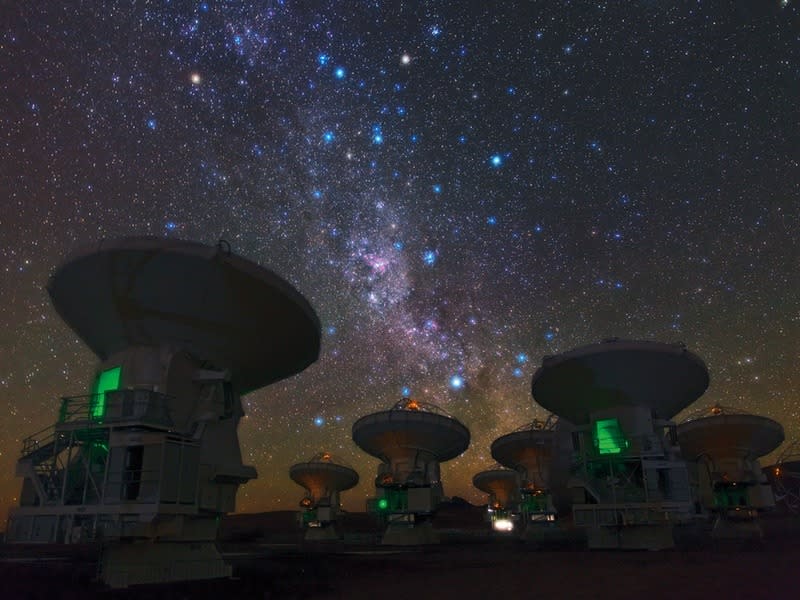This Week in Space: Planet X, Space X, and Japan’s Wayward Mission to Venus

Chile’s ALMA telescope array. (Photo: Space.com)
As we told you last month, the unlikely dream of a large “Planet X” at the far reaches of the solar system — the same dream that motivated Clyde Tombaugh to find Pluto 100 years ago — is still alive. Scientists scanning the icy belts of material way beyond Pluto keep looking for signs that those distant objects are being influenced by a larger object.
Astronomers have already ruled out finding Jupiter- or Saturn-sized planets in the extreme reaches of the solar system. But finding even an Earth-sized body would be a dramatic moment that would change our understanding of the solar system forever.
This week, two research groups submitted scientific papers claiming they’ve discovered a planet-sized object at the edge of the solar system.
Skepticism about these reports is strong, however. Caltech astronomer Mike Brown, who has discovered numerous icy bodies of the outer solar system, strongly suggested on Twitter that the observations described in these papers are either spurious or that the groups actually detected an object outside the solar system. His argument is that the groups’ observations — made with an array of telescopes in Chile’s Atacama desert — are viewing such a narrow area of the sky that they’re either incredibly lucky, or the object they’ve found is one of hundreds of thousands like it.
For more than a century, people have been searching for Planet X. The fact that nobody has succeeded suggests that it’s not actually out there. But there’s always someone who’ll keep trying.
Akatsuki success
And as we told you last week, the thrusters on Japan’s Akatsuki probe failed and it flew right on past its target, Venus. There are usually no second chances in space, but this week, Akatsuki and Venus finally got together.

(Image: ISAS/JAXA)
After years of dumping useless thruster fuel to reduce the probe’s weight and careful maneuvers with its much weaker positional thrusters, the Japanese space agency JAXA instructed Akatsuki to make a final maneuver this week — and it was a success, with the probe snared by the gravitational field of Earth’s sister planet.
Designed to study Venus’s hot atmosphere, Akatsuki’s new, looping orbit will be a little different than the more circular one originally planned. But JAXA’s scientists aren’t complaining: The probe is in orbit at last, returning photos, and promising scientific discoveries five years after all seemed lost.
Meanwhile, back on Earth
There was also a flurry of news from the world of crewed space flight this week.
For starters, SpaceX founder Elon Musk announced on Twitter that his company was shooting for a December 19 launch of the Falcon rocket from Cape Canaveral.

(Photo: SpaceX)
This is notable because SpaceX’s last launch, on June 28, was a catastrophic failure, slowing the venture’s efforts to become a key part of the supply of the International Space Station and the first commercial space company to take astronauts to the ISS.
SpaceX may also try to land the Falcon booster rocket back at Cape Canaveral, rather than on a barge at sea, as it has on previous missions.
While SpaceX gets its engines revved back up, NASA continues to use Russian capsules to reach the ISS. This week, one of those capsules returned to Earth with space travelers from the United States, Japan, and Russia. American astronaut Kjell Lindgren returned to Earth after spending the last four months on the ISS, during which he tweeted a lot of cool space pictures, and even gave out a Hugo Award for the year’s best science fiction novel.
Jason Snell (@jsnell on Twitter) is a longtime technology writer who co-hosts the space podcast Liftoff.
Previously in space news:

